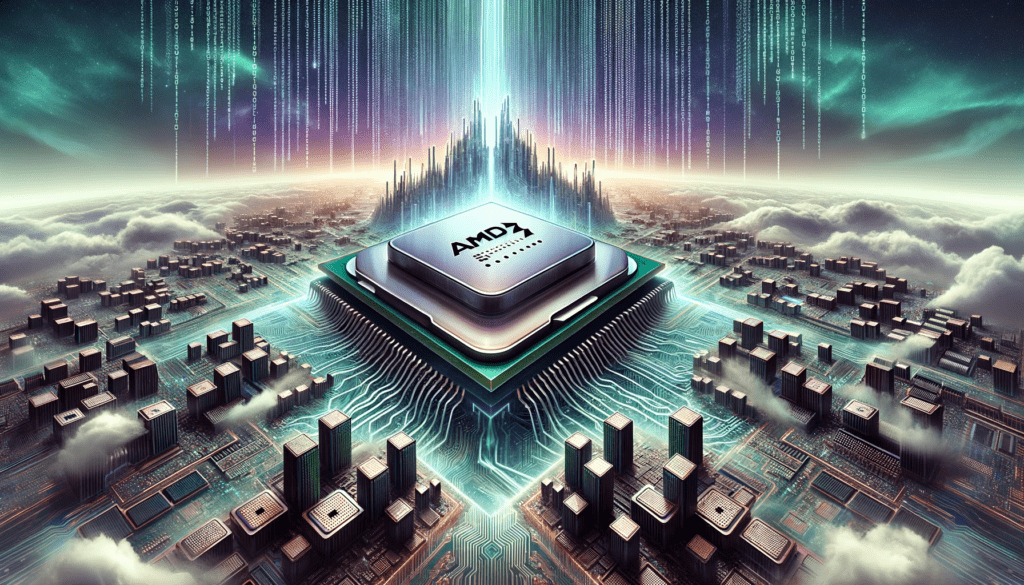Mercury Research published its Q3 x86 processor market share that showcases AMD has grown share across the board in servers, desktops, and laptops. On PCs, AMD has nearly 20% market share in volume and 17% in revenue, which suggests it still has a price advantage over Intel though Intel still has a significant revenue (and potential profit) advantage over AMD. In servers, AMD reports close to a whopping 30% revenue share in volume and 24% in units, which showcases a reverse dynamic where it appears to be a premium brand now. And the company finally broke through the 20% market share limit that represents the ceiling for desktops.
Looking back to 2022, AMD has significantly increased its desktop and laptop PC share from around 12% and more modestly increased the server share from around 27%. And these aren’t the only growth areas. AMD is also showing surprising strength around its networking devices. This success is based on demonstrated wins for IBM Cloud, Alibaba Cloud, Oracle Cloud, HPE’s Aruba unit, VMware, and NetApp, among others.
Let’s talk about market share and new market penetration this month.
AMD vs. Intel Market Share
When x86 kicked off back in the 1980s, it wasn’t going to go anyplace unless IBM’s demand for the ability to dual source the technology was met. AMD was brought into the discussion; Intel licensed x86 to AMD, and presto: There was a market. Initially, there was socket compatibility between the two vendors, which made the concept of having two sources for a critical technology work. Both firms had manufacturing capacity, so there was a path for those using x86 to easily swap processor vendors if one or the other had some kind of technical or production problem.
AMD wasn’t really supposed to look at servers since it was outside of the arrangement, and it was supposed to hold PC market share below 20% because Intel didn’t intend to enable their replacement. This resulted in some acting out by Intel and resulting litigation, which provided AMD with substantial additional funding but eliminated socket compatibility. Sadly, AMD traded a tactical benefit and a ton of money for the strategic benefit of being plug-compatible with Intel, significantly increasing the effort needed to displace Intel.
In the early 2000s, Apple freaked everyone out with its successful iPhone and iPad launches. The first wiped out, crippled, or removed huge, powerful companies like Nokia, Microsoft, Blackberry, and Palm from the smartphone market, and the second created the perception that the PC would soon be dead. This resulted in huge pivots by both AMD and Intel toward tablets and smartphones. Fortunately, AMD pulled back first and was eventually able to take advantage of Intel’s excessive focus on a market it couldn’t penetrate and started to see impressive market share growth.
Much of this growth was in servers where AMD was usually significantly overmatched by Intel and had equally massive execution problems, resulting in a lot of executive changes. AMD’s current team has been relatively stable for over a decade. What is most impressive is that, based on this report in which AMD’s getting more revenue market share than unit market share, AMD is now effectively a premium server solution provider over Intel, which I don’t recall ever seeing before.
Expansion Markets
One of the areas that AMD went for that Intel avoided (likely because the margins were so tight) was gaming. This paid off in spades because it allowed AMD to argue that it was the gaming brand to beat, not Intel or NVIDIA because AMD was in these gaming solutions and the others were not. Console gaming not only has slim margins, but it also has significant revenue hills and valleys due to the cyclical nature of the razor/blade model for consoles (they are sold at, near, or even below cost, so actual profits come from game sales). It is good for volume, and support is very low, but margins tend to be very small, with the major benefits being becoming intimate with game developers and having your brand connected to gaming.
The most recent and interesting effort is from the AMD Networking Devices Group. As noted, this group has penetrated the cloud vendors, with some taking AMD’s entire technology stack and raving about the gains in both performance and energy consumption. AMD brought out executives from Alibaba and Kyndryl who raved about the performance of AMD-based networking devices credibly (as customers generally are), pointing out that they were able to substantially reduce costs while impressively increasing performance. They were able to displace massive carrier-grade switches with more automated, cheaper alternatives and use AI for better management and improved security. In short, as testimonials go, this one was impressive and showcases how far AMD has come in this new market.
Wrapping Up
AMD continues to perform very well and has even broken from Intel’s shadow, but if AMD ever wants to move past Intel (which is being far better run today), it will need to break from x86 and go its own way. AMD has looked at Arm in the past, but I think it would be better served with RISC-V due to its more attractive license pricing, open-source base, and greater potential flexibility without Arm’s bureaucracy.
For now, AMD is doing well, steadily increasing market share and advancing impressively into both new and old markets. But changes are in the wind both with AI and with Arm-based high efficiency alternatives (including a coming effort from NVIDIA), and Intel is slowly strengthening, too. To truly become a market leader, AMD still needs to get around Intel. Unless Intel stumbles again, that path is likely around, not through, the larger firm.
- The Trillion-Dollar Distraction: Why AMD’s IBM-Trained CEO and Quiet Execution Make It a More Valuable Long-Term Bet Than Overvalued NVIDIA - November 17, 2025
- The Missing Link: Why the Wacom MovinkPad Pro 14 Is the Perfect Human Tool for the AI Art Revolution - November 7, 2025
- Lenovo’s Secret Weapon: Solving AI’s Failure-to-Launch Crisis - November 3, 2025




Comments are closed.